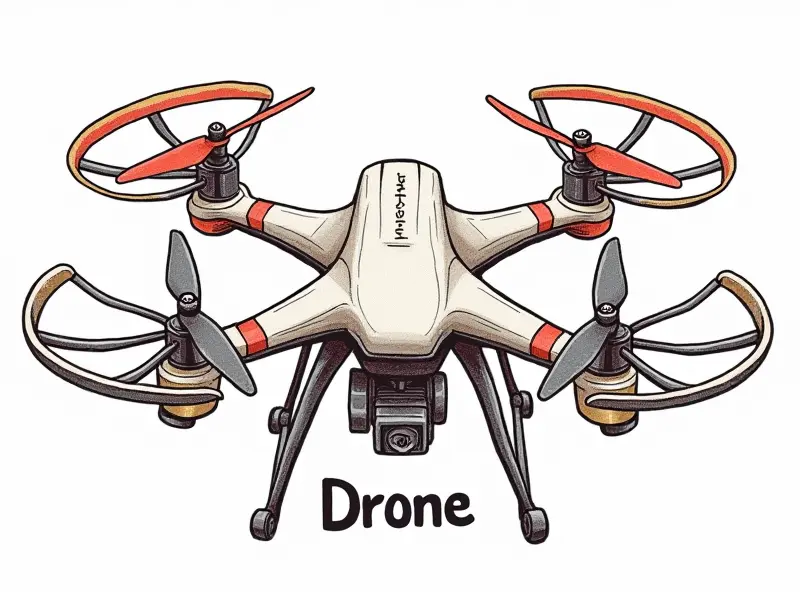Drone battery safety tips

Drone Battery Safety Tips
Understanding Drone Battery Ratings & Specs
To ensure you use your drone's battery correctly, it’s crucial to understand its specifications. Key metrics include:
- C Rating: Indicates the maximum discharge rate of a LiPo battery.
- Voltage (V): The electrical potential difference across the battery terminals.
- Ah Capacity: Represents the total energy stored in the battery, measured in ampere-hours.
These specifications help you choose a compatible charger and understand how long your drone can fly on a single charge.
How to Safely Charge Drone Batteries
Safely charging LiPo batteries is essential for preventing fires and other hazards. Follow these steps:
- Use the Right Charger: Ensure your charger matches the battery's specifications.
- Balancing Charge: Use a balance charger to maintain equal voltage across all cells.
- Avoid Overcharging: Never leave batteries unattended while charging.
Always monitor your drone’s battery during the charging process and ensure it is stored in a safe location away from flammable materials.
Safe Storage of Lithium-Polymer Drone Batteries
Proper storage conditions are vital for maintaining LiPo batteries' longevity. Store them:
- In a Cool, Dry Place: Avoid extreme temperatures and direct sunlight.
- Discharged to 3.8V per Cell: This prevents over-discharge damage.
- Stored in a Fire-Resistant Container: Use a fireproof bag or box for added safety.
Avoiding Overheating in Drone Batteries
Overheating can lead to serious issues, including fires. To prevent overheating:
- Monitor Temperature: Use a temperature sensor or monitor the battery's heat.
- Avoid Overcharging: Charge your batteries in a well-ventilated area and never leave them unattended.
- Limit Flight Time: Do not fly for extended periods without breaks to allow the battery to cool down.
Maximizing Drone Battery Lifespan Safely
To extend your drone’s battery life, follow these practices:
- Charge Fully Before Use: Ensure batteries are fully charged before flying.
- Avoid Deep Discharge: Keep the battery above 30% charge to prevent damage.
- Battery Maintenance: Regularly check for signs of wear and tear, such as swelling or leaks.
Proper Handling of Lithium-Polymer Batteries
Handling LiPo batteries requires care to avoid accidental damage. Here are some tips:
- Handle with Care: Avoid dropping or squeezing the battery.
- Use Protective Gear: Wear gloves when handling batteries to prevent static electricity buildup.
- Transport Safely: Use a fireproof container for transportation and avoid exposing them to extreme temperatures.
Common Mistakes with Drone Battery Care
Avoid these common mistakes that can lead to battery damage or safety issues:
- Overcharging: Leaving batteries on charge indefinitely.
- Undercharging: Flying a drone when the battery is too low.
- Lack of Monitoring: Not checking the temperature or condition of your batteries regularly.
Maintaining Optimal Temperature for Batteries
Maintaining an optimal temperature range (around 15-30°C) is crucial. Use cooling pads and ensure proper ventilation to keep temperatures within this range.
Safe Charging Tips for RC Drones
To charge your drone’s battery safely, follow these guidelines:
- Select the Right Charger: Ensure compatibility with your LiPo batteries.
- Balanced Charging: Use a balance charger to ensure even charging across all cells.
- Monitor During Charge: Keep an eye on the battery during charging and never leave it unattended.
Preventing Drone Battery Fires at Home
To prevent fires, follow these safety measures:
- Use a Fireproof Container: Store batteries in a fire-resistant bag or box.
- Avoid Overheating: Charge batteries in a cool place and monitor their temperature.
- Proper Disposal: Dispose of old batteries safely to prevent accidental ignition.
Proper Disposal of Old Drone Batteries
Disposing of used LiPo batteries requires care. Follow these steps:
- Contact a Battery Recycling Center: Find a local facility that accepts lithium-ion batteries for recycling.
- Follow Local Regulations: Check your area’s guidelines on battery disposal to ensure compliance with environmental laws.
- Do Not Toss in Trash: Never throw old batteries into regular trash bins as they can pose a fire hazard.
Conclusion
Maintaining the safety and longevity of your drone’s LiPo battery is crucial for both operational efficiency and personal safety. By understanding the specifications, charging correctly, storing properly, avoiding overheating, handling with care, and disposing responsibly, you can ensure that your drone remains a reliable tool for all your aerial adventures.

